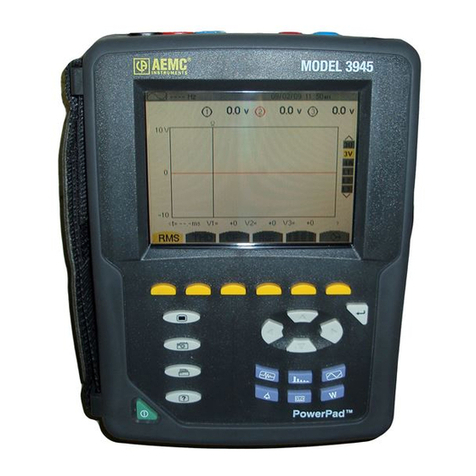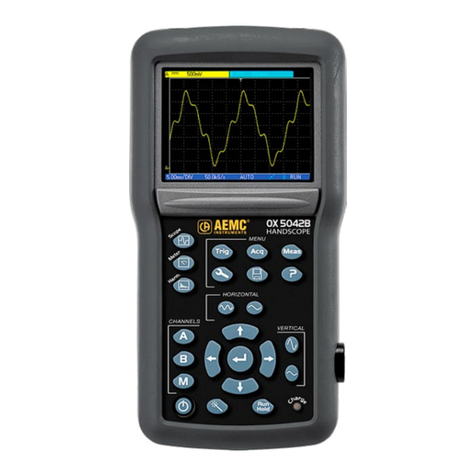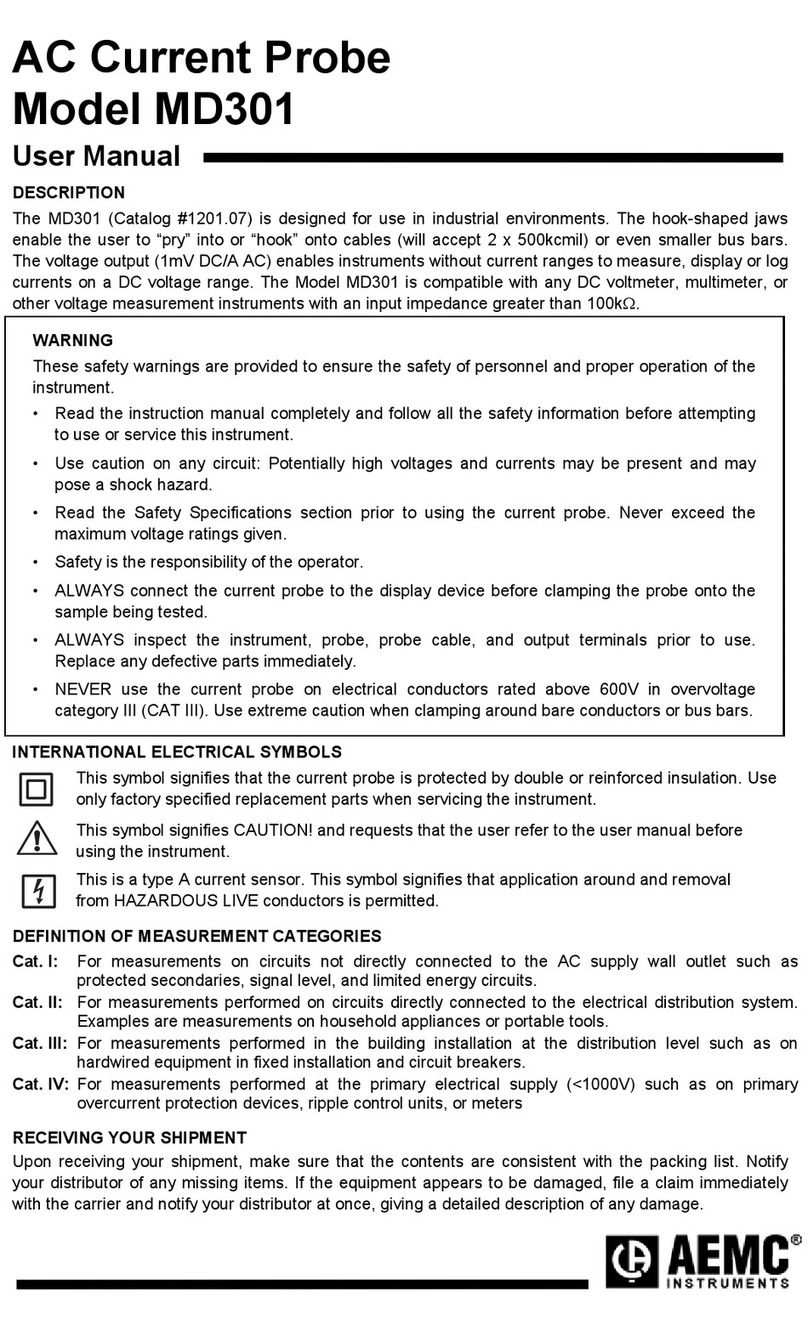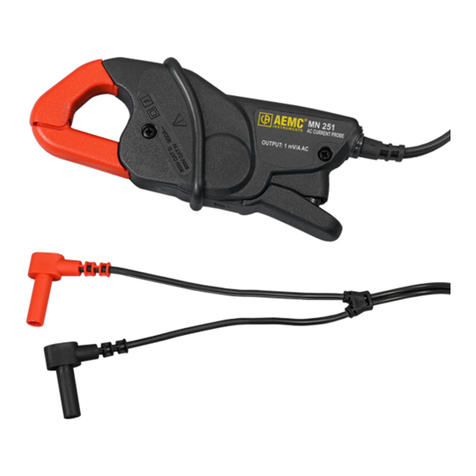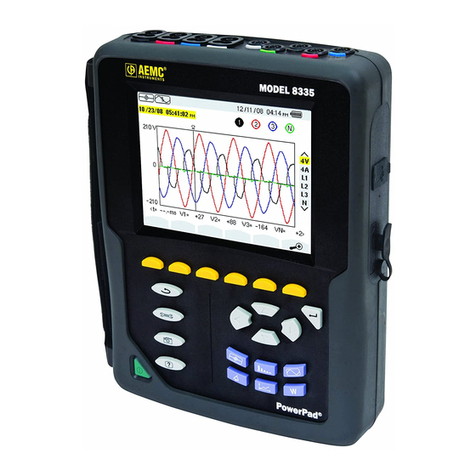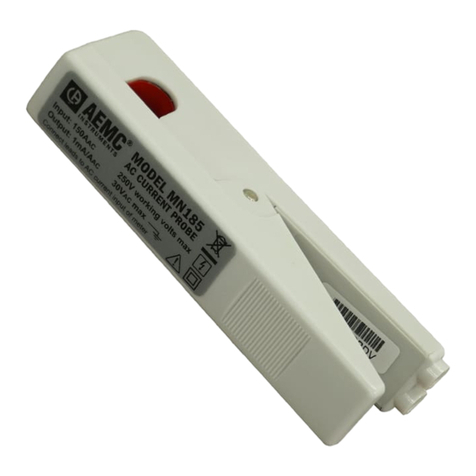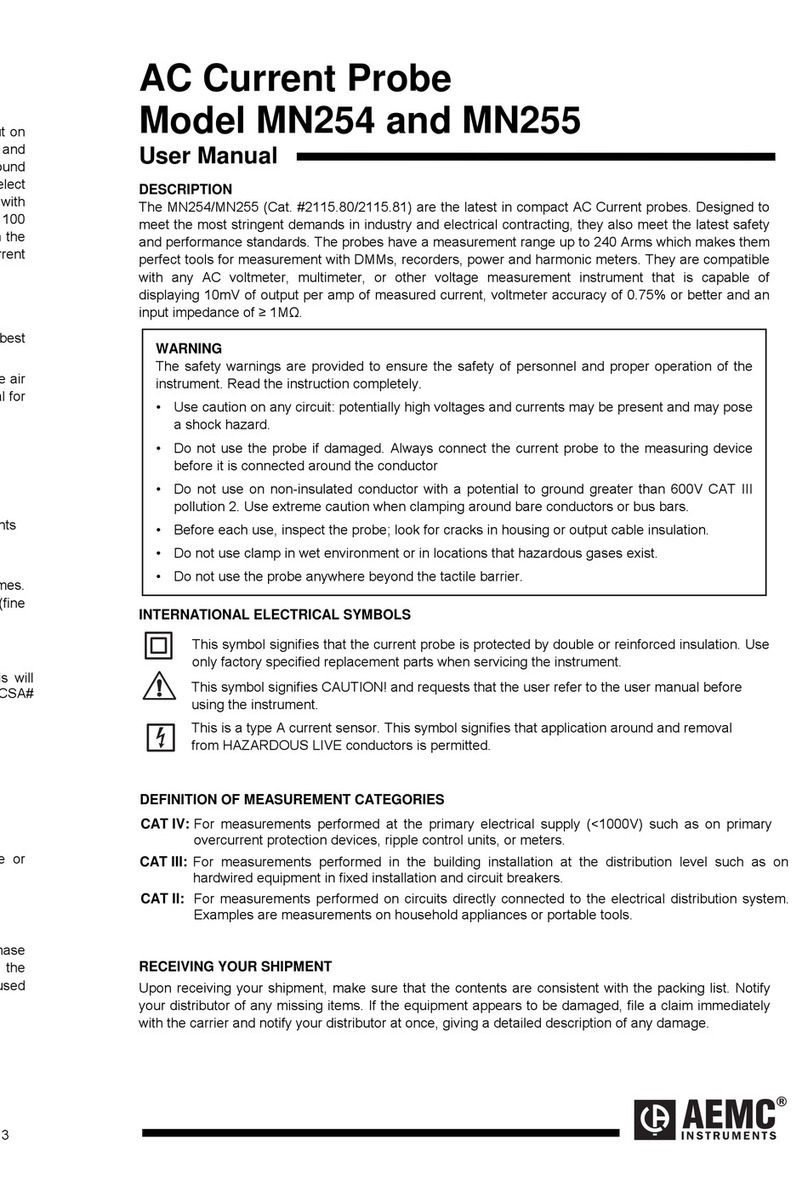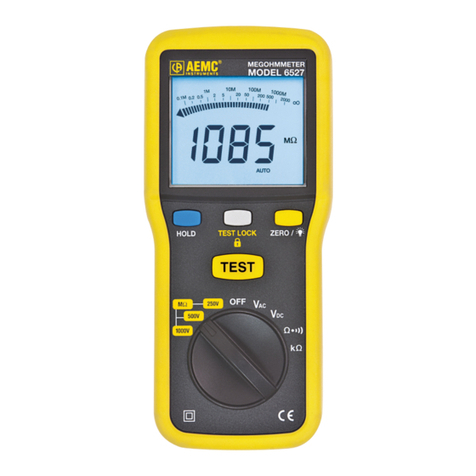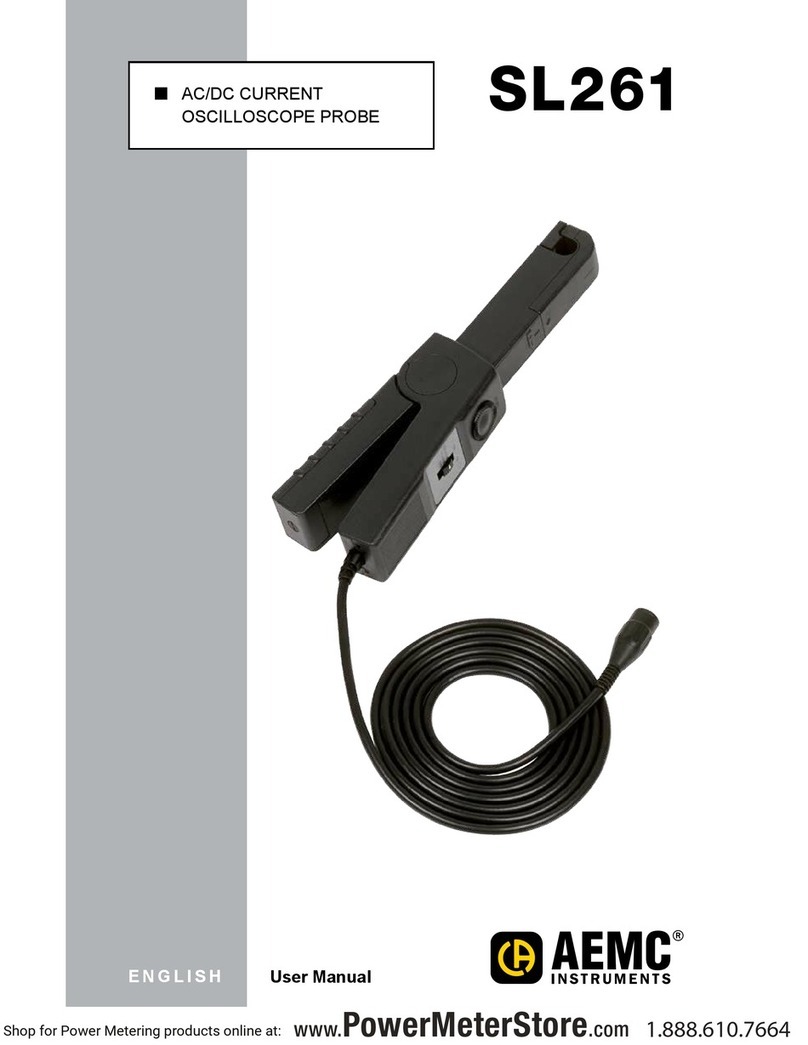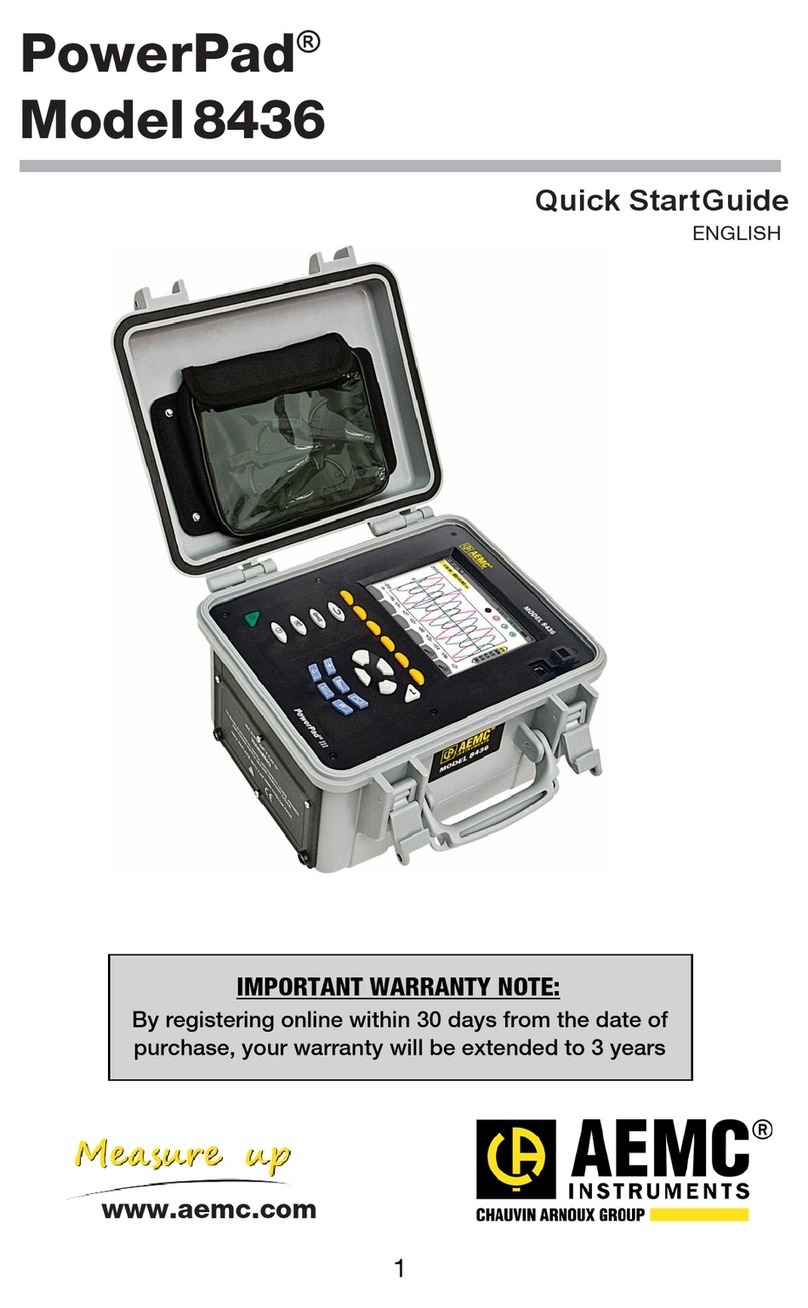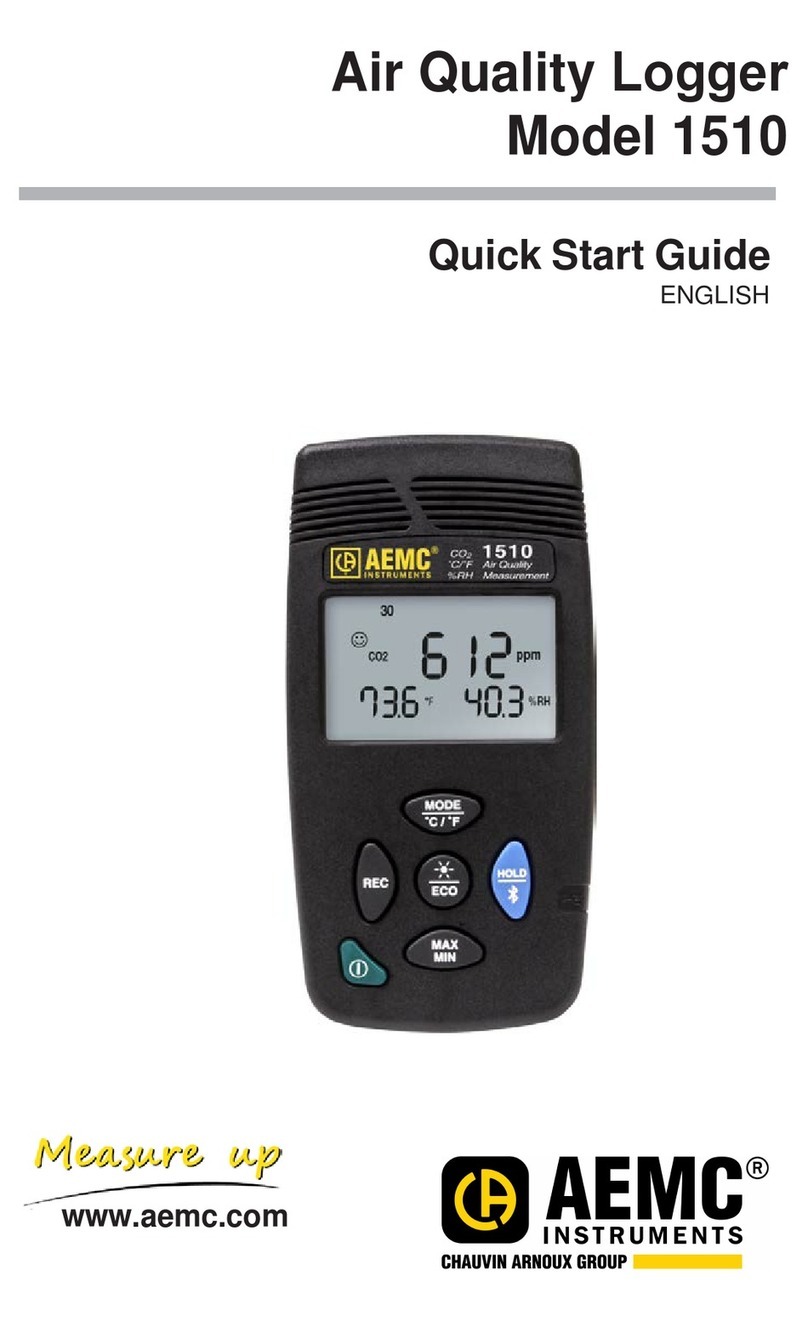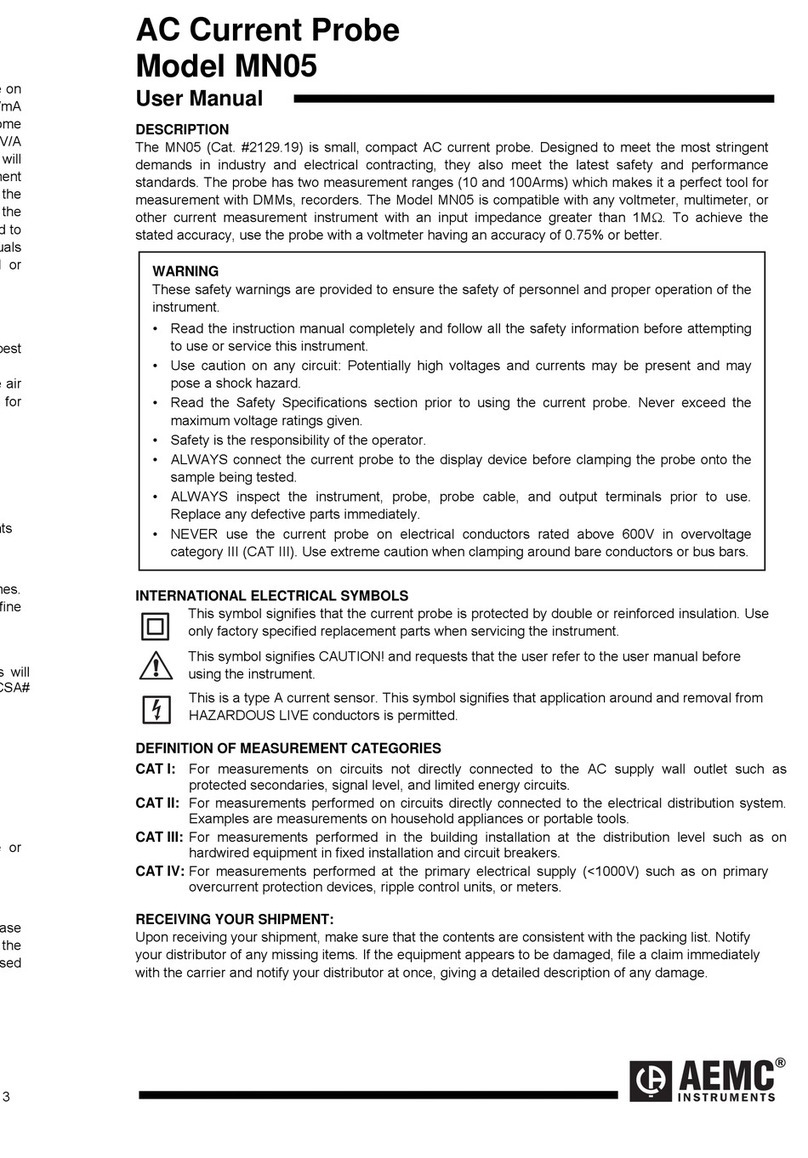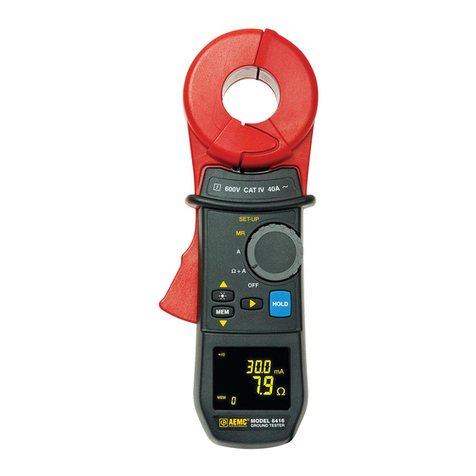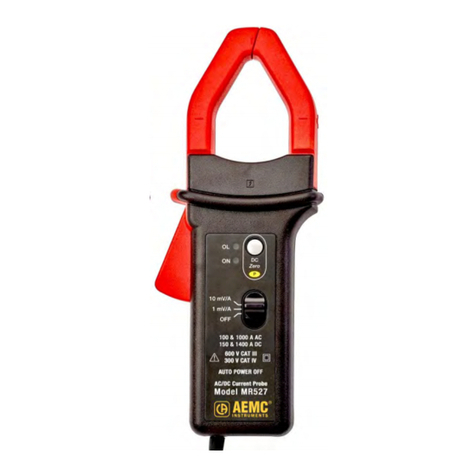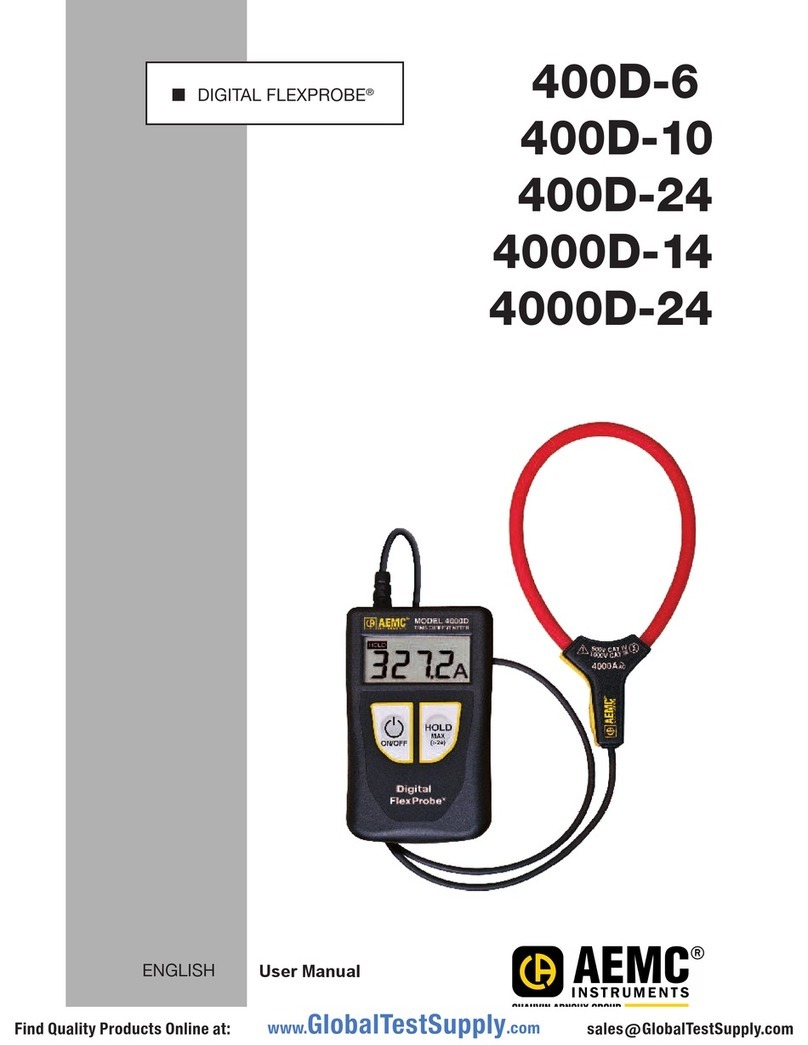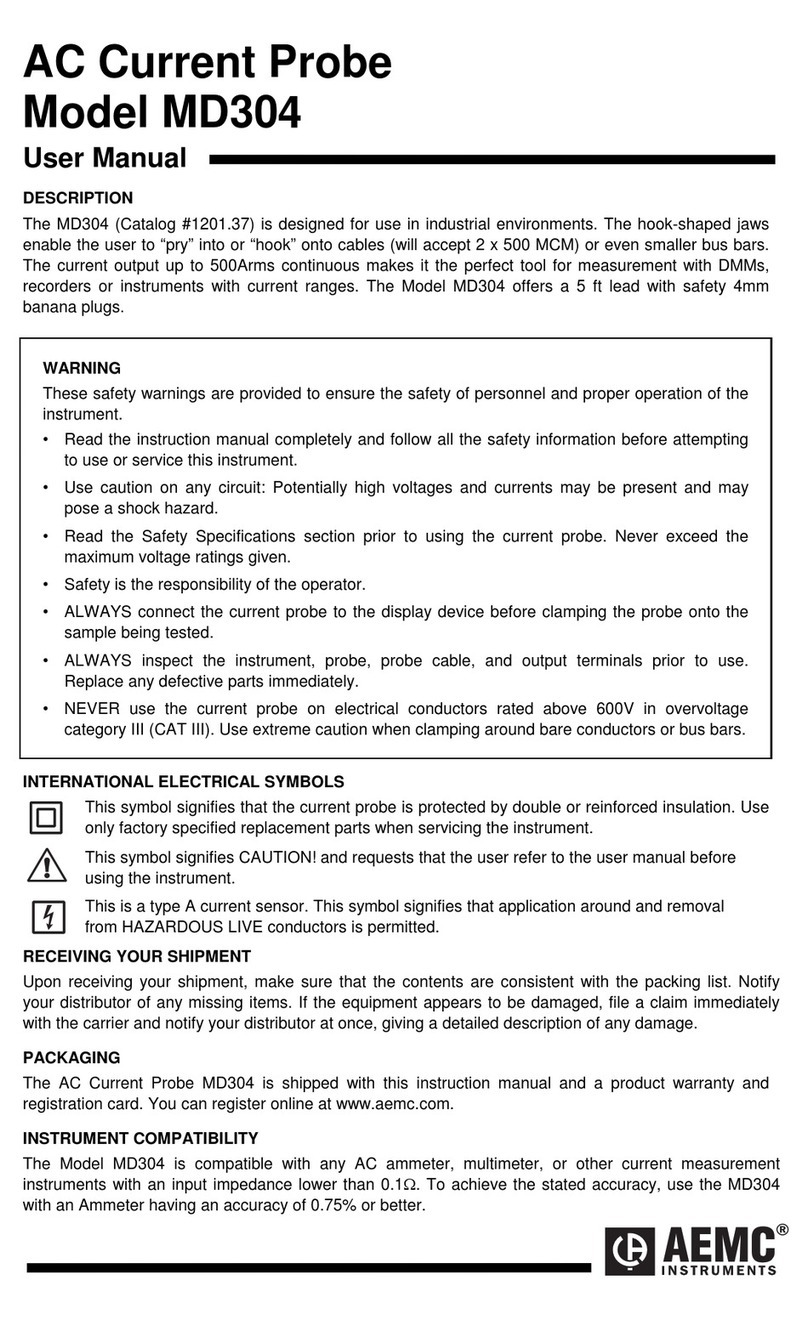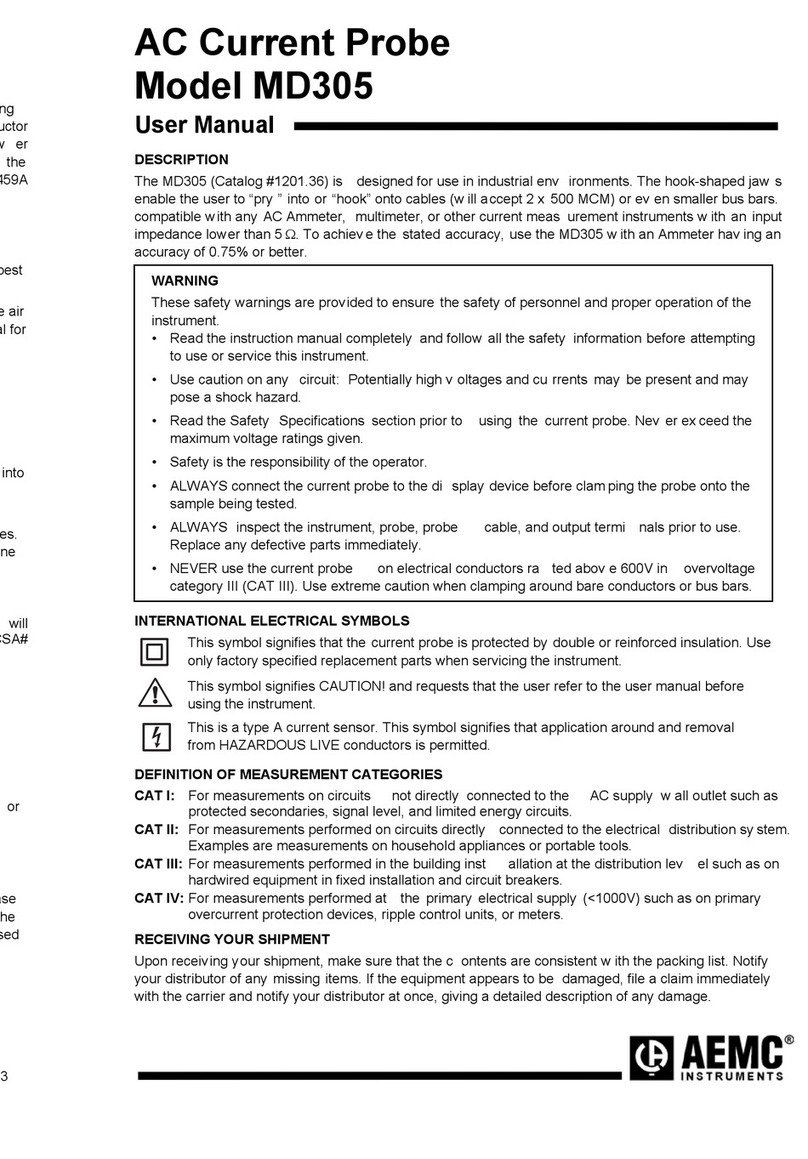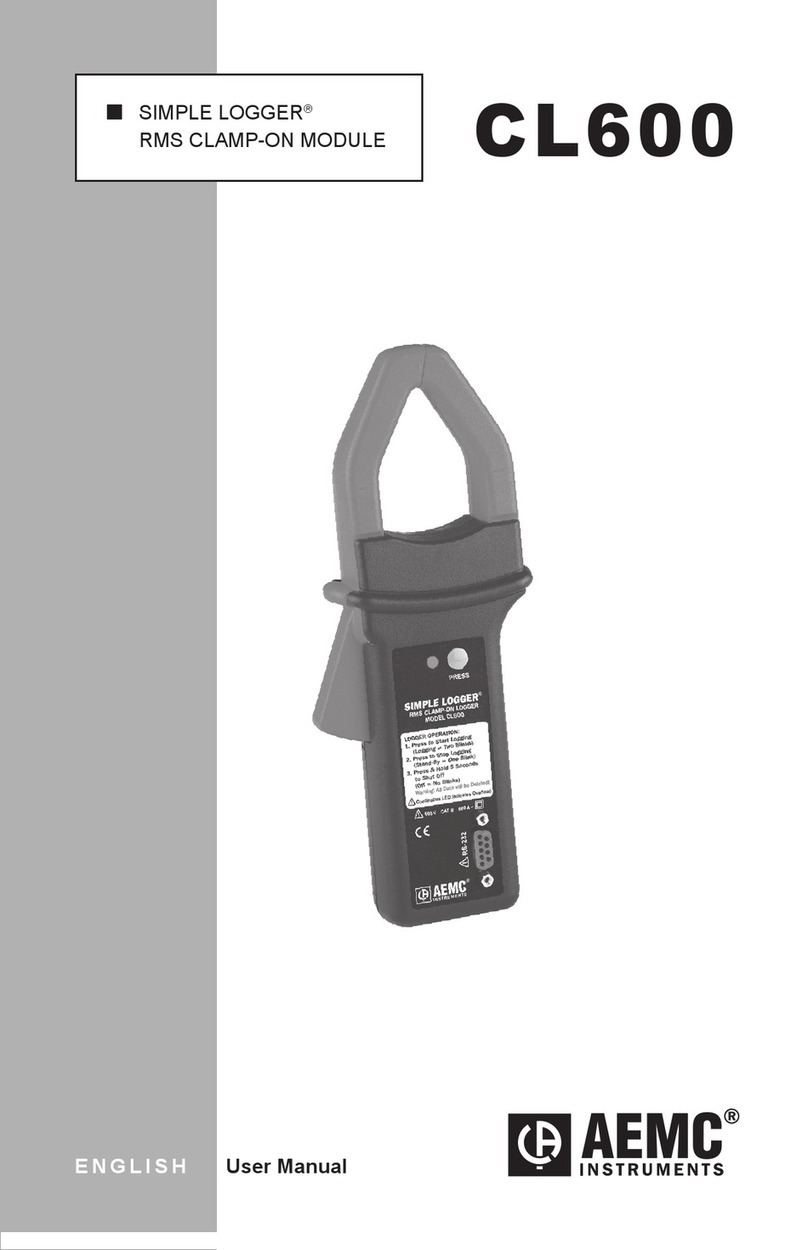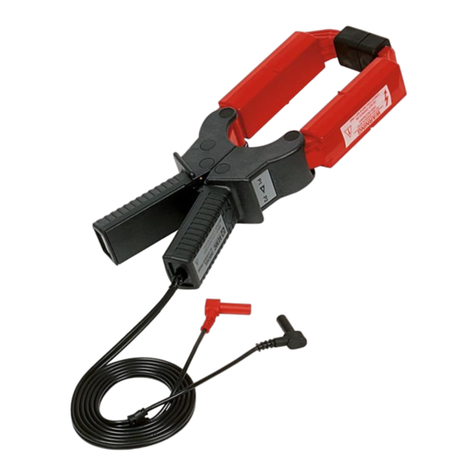
4
Simple Logger®II Model L261
1.2 Definition of Measurement Categories
Cat. I: For measurements on circuits not directly connected to theAC
supply wall outlet such as protected secondaries, signal level, and
limited energy circuits
Cat. II: For measurements performed on circuits directly connected to
the electrical distribution system. Examples are measurements
on household appliances or portable tools.
Cat. III:For measurements performed in the building installation at the
distributionlevelsuchasonhardwiredequipmentinxedinstalla-
tion and circuit breakers.
Cat. IV: For measurements performed at the primary electrical supply
(<1000V) such as on primary overcurrent protection devices,
ripple control units, or meters
1.3 Receiving Your Shipment
Upon receiving your shipment, make sure that the contents are consistent
with the packing list. Notify your distributor of any missing items. If the
equipmentappearstobedamaged,leaclaimimmediatelywiththecarrier
and notify your distributor at once, giving a detailed description of any
damage. Save the damaged packing container to substantiate your claim.
1.4 Ordering Information
Simple Logger®II Model L261 ........................................ Cat. #2126.05
(1-Channel,TRMS600VAC)
Includes USB cable, DataView®CD-ROM, 2x1.5V AA-cell alkaline batteries, 1 set of leads,
one set of alligator clips, user manual and warranty card.
1.4.1 Accessories and Replacement Parts
Lead-Setof2,Color-coded5ftw/color-codedalligatorclips
(Rated600VCatIV,15A) .................................................... Cat. #2140.62
Order Accessories and Replacement Parts Directly Online
Check our Storefront at www.aemc.com/store for availability













